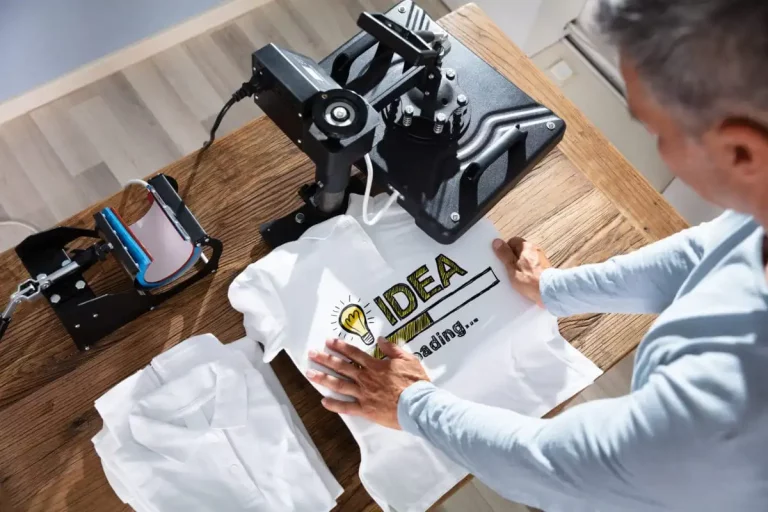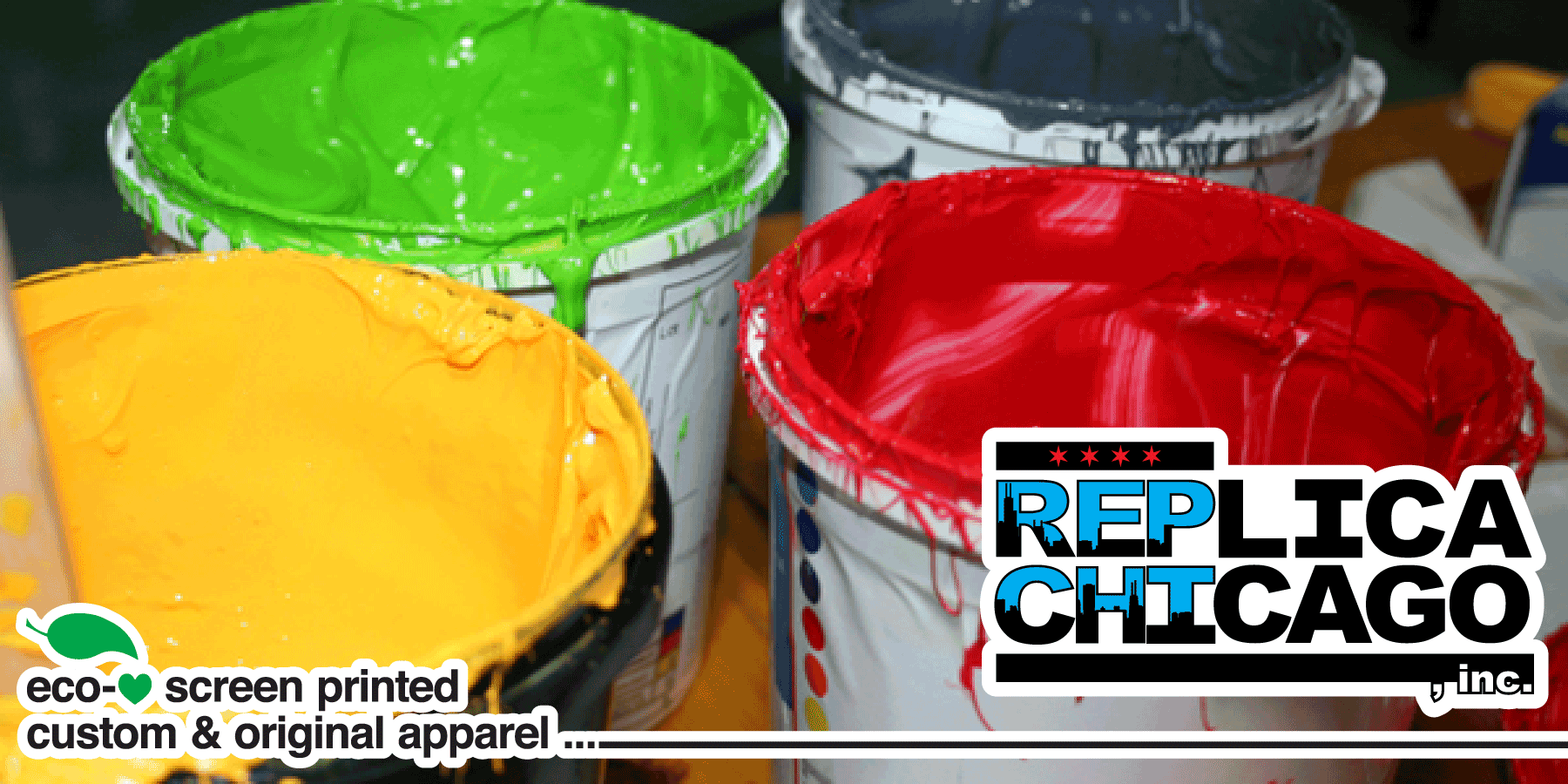High-Quality Custom Screen Printing for Team Apparel
Wiki Article
Mastering Silk Screen Printing: Advice for Creating Stunning Styles
If you're looking to master silk screen printing, you'll need even more than simply interest. It calls for a solid understanding of methods, the right devices, and meticulous preparation. You'll discover exactly how to prepare your artwork and deal with common concerns that can emerge during the process. By the end, you'll prepare to create spectacular styles that mirror your one-of-a-kind style. However initially, let's discover the necessary fundamentals that prepared for your success.Understanding the Basics of Silk Display Printing
Silk screen printing, frequently called display printing, is a flexible method for moving styles onto different materials. You'll locate it's perfect for printing on fabrics, paper, plastic, and much more. The process includes developing a stencil, or screen, that permits ink to go through just in particular areas, creating dynamic and tidy designs.To begin, you'll require to prepare your artwork, guaranteeing it's in an ideal format. screen printing kit. You'll layer your screen with a light-sensitive solution and subject it to light once you have actually got your style all set. This step develops a stencil of your layout on the screen
After cleaning out the unexposed emulsion, you're established to publish. Align your display over your product, apply ink, and make use of a squeegee to press the ink via the display. It's everything about practice and persistence, so don't be reluctant to experiment and improve your strategy as you go.
Crucial Devices and Materials You'll Require
To start with silk screen printing, you'll require a few standard supplies like screens, mops, and ink. You can discover advanced tools that improves your printing quality and effectiveness as soon as you're comfortable. Let's discuss what you'll require to ensure your tasks are successful from the beginning.Fundamental Silk Display Supplies
Beginning on a silk display printing task calls for a few important devices and materials to ensure your success. You'll need a silk screen frame, which holds the mesh that transfers your design. A squeegee is vital for pushing ink via the display onto your substratum. Do not neglect the ink itself; pick shades that match your layout and the product you're printing on. A light is crucial for subjecting your display, in addition to solution to produce your pattern. You'll likewise need a proper work area, ideally one that's totally free and well-lit from dust. Lastly, stock up on cleaning supplies to preserve your devices and maintain your displays in good problem. With these fundamentals, you prepare to plunge into your task!Advanced Printing Equipment
When you prepare to take your silk display printing to the following degree, investing in innovative printing tools can make a substantial distinction. A top quality display printing machine is crucial; search for a multi-color press that enables accurate registration and quicker manufacturing. You'll likewise intend to update to an extra efficient exposure system to guarantee your designs are sharp and vibrant.Take into consideration purchasing a trustworthy warm source, like a conveyor clothes dryer, for even healing of inks. Don't forget specialized inks; water-based and discharge inks supply superb outcomes on numerous textiles. Lastly, an excellent set of mops and solution scoop coater will certainly simplify your procedure, giving your styles that professional side.
Preparing Your Art Work for Printing
Preparing your artwork for silk display printing is vital to accomplishing lively, professional results. Begin by verifying your layout is in the appropriate style-- vector files like.AI or.EPS work best.As soon as your file prepares, produce a different layer for each color in your design. This'll make it less complicated throughout the printing process. Don't neglect to include registration marks to straighten shades appropriately.
Additionally, think about the mesh matter of your display; finer information could need a higher mesh count. Conserve your art work with a resolution of at least 300 DPI to assure crisp prints. By complying with these steps, you'll establish yourself up for a successful printing experience and bring your layouts to life perfectly.
The Screen Printing Process: Step-by-Step
Currently that you've prepared your art work, it's time to concentrate on the screen printing procedure itself. You'll start by preparing your display, guaranteeing it awaits the ink application. From there, you'll discover different printing methods to achieve the most effective outcomes for your project.Preparing Your Display
Obtaining your screen all set is a critical action in the silk display printing process. Once completely dry, position your openness on the display and utilize a light resource to reveal the layout. After exposure, clean out the unexposed solution, and you'll have your screen prepared for printing.Printing Methods Clarified
When your screen is all set, you can plunge right into the interesting procedure of printing. Area your screen on your substratum-- whether it's fabric, paper, or one more material. Secure it to avoid any type of motion. Next, put your ink onto one side of the display and use a squeegee to pull the ink throughout the design. Apply even press to assure the ink permeates via the mesh. Raise the screen carefully to expose your print. If you're layering shades, let each layer completely dry before applying the following. Tidy your display without delay to stop ink from obstructing the mesh and drying out. With method, you'll grasp the nuances of pressure and timing, which will assist you accomplish crisp, lively layouts.Tips for Achieving Vibrant Colors
While accomplishing vivid shades in silk display printing might appear tough, you can easily elevate your designs with a couple of essential techniques. Pick premium inks specifically made for silk display printing; they give far better coloring and protection. Blending inks effectively can additionally improve vibrancy-- try out ratios to find the best mix that stands out.
Last but not least, don't ignore healing your prints correctly. Correct warm setting guarantees the shades bond with the textile, maintaining their vibrancy over time. By applying these strategies, you'll produce stunning, captivating styles that absolutely shine.
Fixing Typical Printing Concerns
Also with vibrant shades in your designs, silk display printing can occasionally present difficulties. One usual problem silk screen printing is ink bleeding, which commonly happens when you utilize way too much ink or don't allow the previous layer completely dry totally. To avoid this, use a squeegee with just the appropriate stress and assure each layer is completely dry prior to including a lot more.If your style isn't lining up properly, double-check your registration marks and make adjustments to your displays. Tidy your displays thoroughly before starting your print run.
Last but not least, if the ink isn't sticking well to the textile, consider the fabric kind and the treating process. Make certain you're making use of the ideal ink and that you're healing it at the suitable temperature level. Troubleshooting these typical problems will certainly assist you accomplish magnificent outcomes.
Trying out With Strategies and Impacts
Trying out different methods and effects can elevate your silk display printing projects to new heights. Don't be worried to push limits! Try layering colors for depth; overlapping tones produces distinct blends that stand out. You can additionally have fun with textures-- making use of various squeegee strategies or including materials like sponges or brushes includes measurement to your prints.Think about making use of specialized inks, such as glow-in-the-dark or metallic, to offer your designs an unexpected spin. You may even explore stenciling, where you can reduce intricate styles for spectacular results.
Don't forget substratum variations! Printing on fabrics, wood, or paper can generate various outcomes that enhance your task's feeling.
Finally, keep a journal of your experiments. Recording your failings and successes will certainly lead your future productions and aid you fine-tune your style. Welcome the procedure, and take pleasure in the journey of uncovering what works best for you!
Often Asked Questions
Exactly how Do I Tidy and Preserve My Display Printing Devices?
To clean and maintain your screen printing equipment, on a regular basis scrub screens with an appropriate cleaner, wash mops after use, and shop every little thing in a completely dry, dust-free atmosphere. Keeping points clean assurances much better prints and longer-lasting devices.
Can I Publish on Products Other Than Fabric?
Yes, you can print on products besides textile! Take into consideration using paper, wood, or plastic. Just see to it your screens and inks work with those surface areas for the finest outcomes. Experiment and have enjoyable!What Is the Best Method to Store Displays and Inks?
To store inks and displays efficiently, keep screens upright in an amazing, completely dry area, and cover them to avoid dust. Store inks in impermeable containers, away from direct sunshine, to maintain their top quality and uniformity.Just how Do I Pick the Right Mesh Count for My Task?
Picking the appropriate mesh count relies on your layout's detail and ink kind. For great details, go higher, like 200 mesh (screen printing kit). For strong layouts, a lower count, around 110, works finest. Experiment to locate your optimal suit.What Are the Environmental Impacts of Silk Screen Printing?
Silk screen printing can have ecological effects, like chemical waste and water usage. You can decrease these by utilizing environmentally friendly inks, reusing materials, and properly getting rid of chemicals to minimize your project's ecological footprint.Silk screen printing, commonly called screen printing, is a versatile method for moving designs onto different materials. Straighten your screen over your material, use ink, and utilize a squeegee to press the ink via the screen.To get begun with silk screen printing, you'll need a couple of fundamental materials like screens, mops, and ink.When you're all set to take your silk screen printing to the next degree, spending in innovative printing devices can make a considerable difference.Obtaining your display ready is a vital action in the silk screen printing process.
Report this wiki page